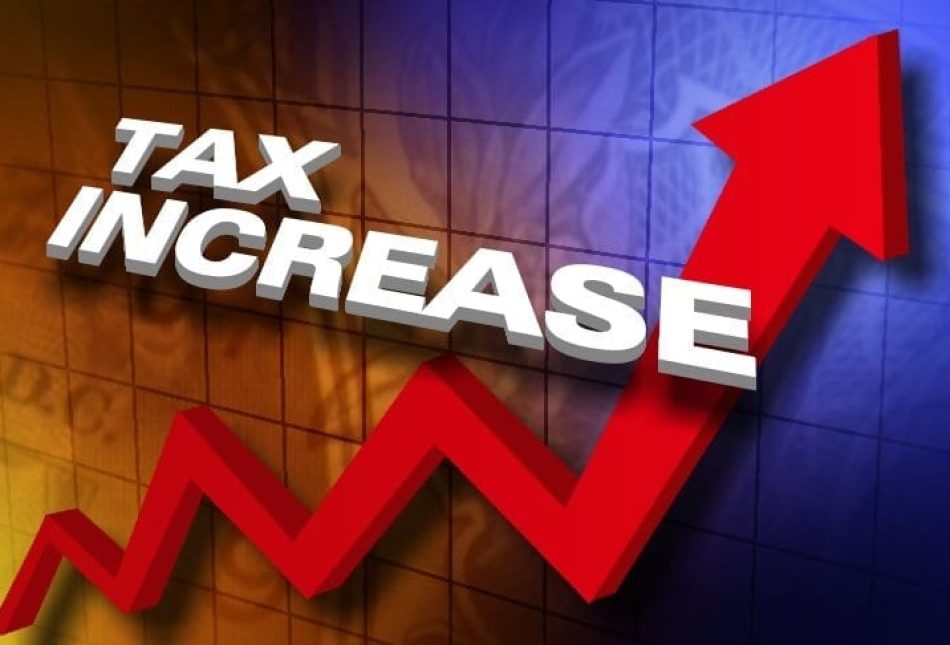What New Mexico’s Tax-Hikers Don’t Want You to Know


The op-ed below appeared in the Farmington Daily Times on December 11th.
New Mexico’s economy has fewer jobs today than it did in early 2008. As employment grows nationally, it’s shrinking in the Land of Enchantment. Our jobless rate is now the highest in the contiguous states. Incomes are stagnant, the food-stamp rolls have risen for 29 months in a row, and Millennials continue to flee for abundant opportunities elsewhere.
Sounds like a spectacularly bad time to raise taxes, doesn’t it?
Not to New Mexico’s Big Government lobby.
When the legislature convenes for a 60-day session next month, the state’s liberal establishment will be pushing to raise taxes on everything from gasoline to personal income, alcohol to corporate profits, electronic cigarettes to capital gains. Only “revenue enhancement,” the narrative holds, can solve New Mexico’s persistent budget deficits.
The left’s campaign for tax hikes is founded on rate cuts adopted by Governor Susana Martinez, a Republican, and her predecessor, Democrat Bill Richardson. In 2007, Forbes praised the latter as a “tax cutter” who “whacked New Mexico’s top income-tax rate by 40 percent and capital gains by 50 percent.” In 2013, as part of a legislative package that she claimed would be “good for New Mexico’s economy,” the former signed a phased-in reduction of the top corporate-tax rate, from 7.6 percent to 5.9 percent.
Bill Jordan, of the ultra-liberal New Mexico Voices for Children, believes the state’s in a fiscal crisis “because we cut taxes in the hopes that it would bring wealthy people and profitable corporations to New Mexico, which would create jobs. We lost that bet.” But Jordan, and his ideological allies, have incomplete memories. Taking a broader view, it becomes quite clear that while some taxes have been cut during the Richardson-Martinez era, others have been hiked.
The gross receipts tax (GRT) is the dominant revenue-raising mechanism at both the state, county, and municipal levels of government. The state’s GRT has risen by just 2.5 percent since 2003, when Richardson was inaugurated. But during the same period, local governments have engaged in an orgy of GRT-hiking. In Albuquerque, the levy’s burden has risen by 25.8 percent. In Santa Fe, the increase has been 24.3 percent. But among major municipalities, none can top Las Cruces, which has seen its GRT rise by 27.9 percent. Other cities and towns with big hikes include Alamogordo (26.7 percent), Clovis (26.5 percent), Farmington (25.8 percent), and Silver City (23.1 percent).
The tax-corporations-more crowd should remember that the GRT is a kind of “super sales tax.” It doesn’t solely impact transactions involving final consumption. Business that sell to businesses are affected, too, causing “pyramiding,” which the Tax Foundation describes as taxes piling “on top of one another as [a] good or service moves through production.” It’s likely that many of the enterprises that benefitted from Governor Martinez’s pursuit of lower corporate taxes would gladly make the trade for lower GRT rates. And as economist and former state revenue official Thomas Clifford put it, “The likelihood is high that most of the ultimate burden of [GRT pyramiding] is borne by New Mexico households, a hidden tax with regressive implications.”
The levy placed on property is another issue that New Mexico’s tax-hikers would like to ignore. The statewide mill rate has risen by 21.1 percent since 2003. In many communities, property-tax bills have gotten far more expensive. For example, the inflation-adjusted revenue Las Cruces extracted from its total tax levy rose by 128 percent between 2003 and 2015 — a boost far in excess of population growth.
It’s certainly true that by themselves, lower individual and corporate taxes have not generated much job- and wealth-creation in New Mexico. But conveniently neglecting the substantial increases in GRT rates and property taxes does not produce a healthy debate over the state’s dire fiscal condition.
Look at all the taxes that individuals, families, and business pay in New Mexico, and it’s clear that the relief adopted under the present and former governor has proven largely illusory. Add that harsh reality to a state economy that’s arguably the worst in the nation, and the case for hiking taxes during the 2017 legislative session vanishes.
D. Dowd Muska (dmuska@riograndefoundation.org) is research director of the Rio Grande Foundation, an independent, nonpartisan, tax-exempt research and educational organization dedicated to promoting prosperity for New Mexico based on principles of limited government, economic freedom and individual responsibility.
